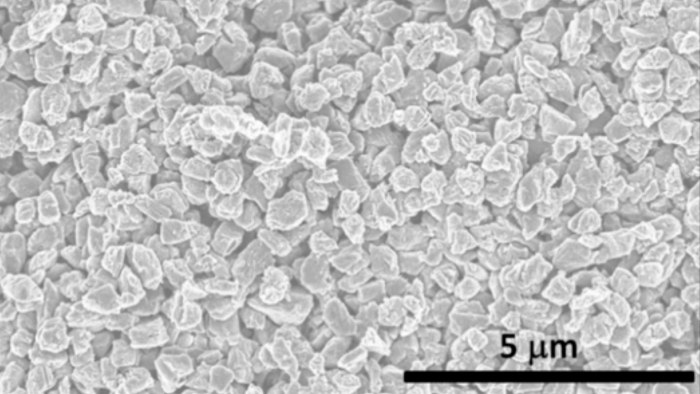Carbon boasts the ability to exist in
different forms and
phases, and now researchers have discovered Q-carbon, a distinct
new solid phase of carbon with the potential to make converting
carbon into diamonds as easy as making toast (if you make toast with
a high powered laser beam). It's early days yet, but researchers are
already claiming that Q-carbon is magnetic, electro-conductive,
glows in the dark, is relatively inexpensive to make and has stolen
the crown of "world's hardest substance" from diamond.
Professor Jay Narayan of North Carolina State University is the
lead author of three papers describing the work that sees Q-carbon
join the growing list of carbon solids, a list that includes
graphite, graphene, fullerene, amorphous carbon and diamond. He has
suggested that the only place Q-carbon might be found in the natural
world is in the core of certain planets.
The researchers created Q-carbon by starting with a thin plate of sapphire (other substrates, such as glass or a plastic polymer, will also work). Using a high-power laser beam, they coated the sapphire with amorphous carbon, a carbon form with no defined crystalline structure. They then hit the carbon with the laser again, raising its temperature to about 4,000 Kelvin, and then rapidly cooled, or quenched, the melted carbon. This stage of quenching is where "Q" in Q-carbon comes from.
Narayan says Q-carbon was discovered after a long search to find a mechanism for carbon to diamond conversion.
"This was the closure to a life-long effort, started when I first published a paper on the subject in 1979, followed by papers in 1991 and many others along the way," Narayan told Gizmag. "Finally, it happened."
This whole process of creating Q-carbon is relatively inexpensive. It's all done at room temperature and at ambient air pressure, using a laser much like the ones used for laser eye surgery.
So far, potential uses for Q-carbon are largely speculative, but Narayan says it might provide tools for industry and medicine, for electronic parts or for creating brighter, longer-lasting display technologies. But for now, there is one area where Q-carbon gets interesting (and by interesting I mean "potentially lucrative").
Diamond, being the world's hardest substance, has a range of uses in creating cutting and polishing tools across industries from mining to medicine. The challenge is that diamond is expensive to mine and to manufacture, requiring high temperatures and high pressures. But by mixing up the substrates and controlling the rate of cooling, Narayan and his team have discovered they can create tiny diamonds within the Q-carbon.
"It will take something in the order of 15 minutes to create one carat of diamond," Narayan told us. "But other applications will make a bigger impact."
Narayan says he envisages Q-carbon's first useful application will be in creating "a diamond factory for nanoproducts" for use in drug delivery and industrial processes.
"We can make Q-carbon films, and we're learning its properties, but we are still in the early stages of understanding how to manipulate it," Narayan says. "We know a lot about diamond, so we can make diamond nanodots and microneedles, [but] we don't yet know how to make Q-carbon nanodots or microneedles. That's something we're working on."
Papers detailing the research appear in the Journal of Applied Physics and APL Materials.
Source: North Carolina State University
